STEINBECK, John (1902-1968). Autograph manuscript, 8 pages , of parts 2 and 3 (of 3) of the article "Autobiography: Making of a New Yorker," [New York, late November-December 1952], and three autograph letters signed ("John Steinbeck")., 3 pages , to its editor Seymour Peck, same place and dates. Together 11 pages, folio, in pencil on rectos of 12 sheets of yellow legal-size lined paper, with very light revisions, edges slightly darkened because of the paper quality . "EPISODES IN THE PROCESS FROM COUNTRY BOY TO NEW YORKER" Steinbeck's article appeared in The New York Times Magazine for 1 February 1953 (Goldstone & Payne C90). The first part (the manuscript of which is not extant) dealt with Steinbeck's initial encounter with New York City in 1925 when he was twenty-three. Part two begins with an account of his second "assault on New York" [in the fall of 1935] which proved "as ridiculous as the first." He explains that "three of my preceding novels did not make their advance ... The largest amount I had gotten for a short story was 90 dollars. That was for 'The Red Pony' and the payment was huge only because the story was very long. When royalties for Tortilla Flat [1935] went over a thousand dollars, and when Paramount bought the book for 3000 -- 2700 net, I should have filled with joy, but instead I was frightened ... Contented poverty is a technique and very difficult to learn. I was afraid that once lost, it could not be regained ... One of my wife's nightmares was that I should be let loose in Woolworth's with five dollars ... Whereas on my first try, New York was a dark hulking frustration, the second time it became the Temptation and I a whistle stop St. Anthony ... I was afraid I would lose my taste for 29 cent wine and red beans and hamburgers ... The City was a great snare set in the path of my artistic simplicity and integrity..." Later (in 1941), after taking an apartment in New York, on East 51st Street, Steinbeck "walked miles through the streets for the exercise, began to know the butchers and the newsdealers and the liquor man not as props or as enemies but as people...," and he describes his ultimate realization that he belonged in New York as "a kind of mystical experience." He expands on the experience of someone from a small town in a big city and concludes that "the city finally accepts you just as you finally accept the city." New York, Steinbeck writes in the third part of the manuscript, is unlike other cities: "It does not have character like Los Angeles or New Orleans. It is all character -- in fact it is everything. It can destroy a man, but if his eyes are open, it cannot bore him ... New York is an ugly city, a dirty city. Its climate is a scandal, its politics are used to frighten children, its traffic is madness, its competition is murderous. But ... once you have lived in New York and it has become your home -- no place else is good enough. All of everything is concentrated here, population, theatre, art, painting, publishing, importing, business, murder, mugging, luxury, poverty. It is all of everything..." Of the three letters to The New York Times Magazine editor Seymour Peck, one is written on the blank half page at the end of part two of the manuscript and the other two are on separate sheets. The first letter is in reply to Peck's request for the article: "...I lay in bed last night kind of basking in the reknown you put on me. John Steinbeck -- critic of cities. I could see myself flitting from city to city sipping the sweets of each and washing them down with much larger towns like Los Angeles. Well right in the middle of my gilded cosmopolitanism it suddenly occurred to me that New York is the only city I have ever lived in in my life ... I came here in 1925, got the hell kicked out of me, and ran west, came back 11 years later ... I should like to send you a series of episodes in the process of country boy to New Yorker..." In the third letter, dated 17 December 1952 and forwardin
STEINBECK, John (1902-1968). Autograph manuscript, 8 pages , of parts 2 and 3 (of 3) of the article "Autobiography: Making of a New Yorker," [New York, late November-December 1952], and three autograph letters signed ("John Steinbeck")., 3 pages , to its editor Seymour Peck, same place and dates. Together 11 pages, folio, in pencil on rectos of 12 sheets of yellow legal-size lined paper, with very light revisions, edges slightly darkened because of the paper quality . "EPISODES IN THE PROCESS FROM COUNTRY BOY TO NEW YORKER" Steinbeck's article appeared in The New York Times Magazine for 1 February 1953 (Goldstone & Payne C90). The first part (the manuscript of which is not extant) dealt with Steinbeck's initial encounter with New York City in 1925 when he was twenty-three. Part two begins with an account of his second "assault on New York" [in the fall of 1935] which proved "as ridiculous as the first." He explains that "three of my preceding novels did not make their advance ... The largest amount I had gotten for a short story was 90 dollars. That was for 'The Red Pony' and the payment was huge only because the story was very long. When royalties for Tortilla Flat [1935] went over a thousand dollars, and when Paramount bought the book for 3000 -- 2700 net, I should have filled with joy, but instead I was frightened ... Contented poverty is a technique and very difficult to learn. I was afraid that once lost, it could not be regained ... One of my wife's nightmares was that I should be let loose in Woolworth's with five dollars ... Whereas on my first try, New York was a dark hulking frustration, the second time it became the Temptation and I a whistle stop St. Anthony ... I was afraid I would lose my taste for 29 cent wine and red beans and hamburgers ... The City was a great snare set in the path of my artistic simplicity and integrity..." Later (in 1941), after taking an apartment in New York, on East 51st Street, Steinbeck "walked miles through the streets for the exercise, began to know the butchers and the newsdealers and the liquor man not as props or as enemies but as people...," and he describes his ultimate realization that he belonged in New York as "a kind of mystical experience." He expands on the experience of someone from a small town in a big city and concludes that "the city finally accepts you just as you finally accept the city." New York, Steinbeck writes in the third part of the manuscript, is unlike other cities: "It does not have character like Los Angeles or New Orleans. It is all character -- in fact it is everything. It can destroy a man, but if his eyes are open, it cannot bore him ... New York is an ugly city, a dirty city. Its climate is a scandal, its politics are used to frighten children, its traffic is madness, its competition is murderous. But ... once you have lived in New York and it has become your home -- no place else is good enough. All of everything is concentrated here, population, theatre, art, painting, publishing, importing, business, murder, mugging, luxury, poverty. It is all of everything..." Of the three letters to The New York Times Magazine editor Seymour Peck, one is written on the blank half page at the end of part two of the manuscript and the other two are on separate sheets. The first letter is in reply to Peck's request for the article: "...I lay in bed last night kind of basking in the reknown you put on me. John Steinbeck -- critic of cities. I could see myself flitting from city to city sipping the sweets of each and washing them down with much larger towns like Los Angeles. Well right in the middle of my gilded cosmopolitanism it suddenly occurred to me that New York is the only city I have ever lived in in my life ... I came here in 1925, got the hell kicked out of me, and ran west, came back 11 years later ... I should like to send you a series of episodes in the process of country boy to New Yorker..." In the third letter, dated 17 December 1952 and forwardin






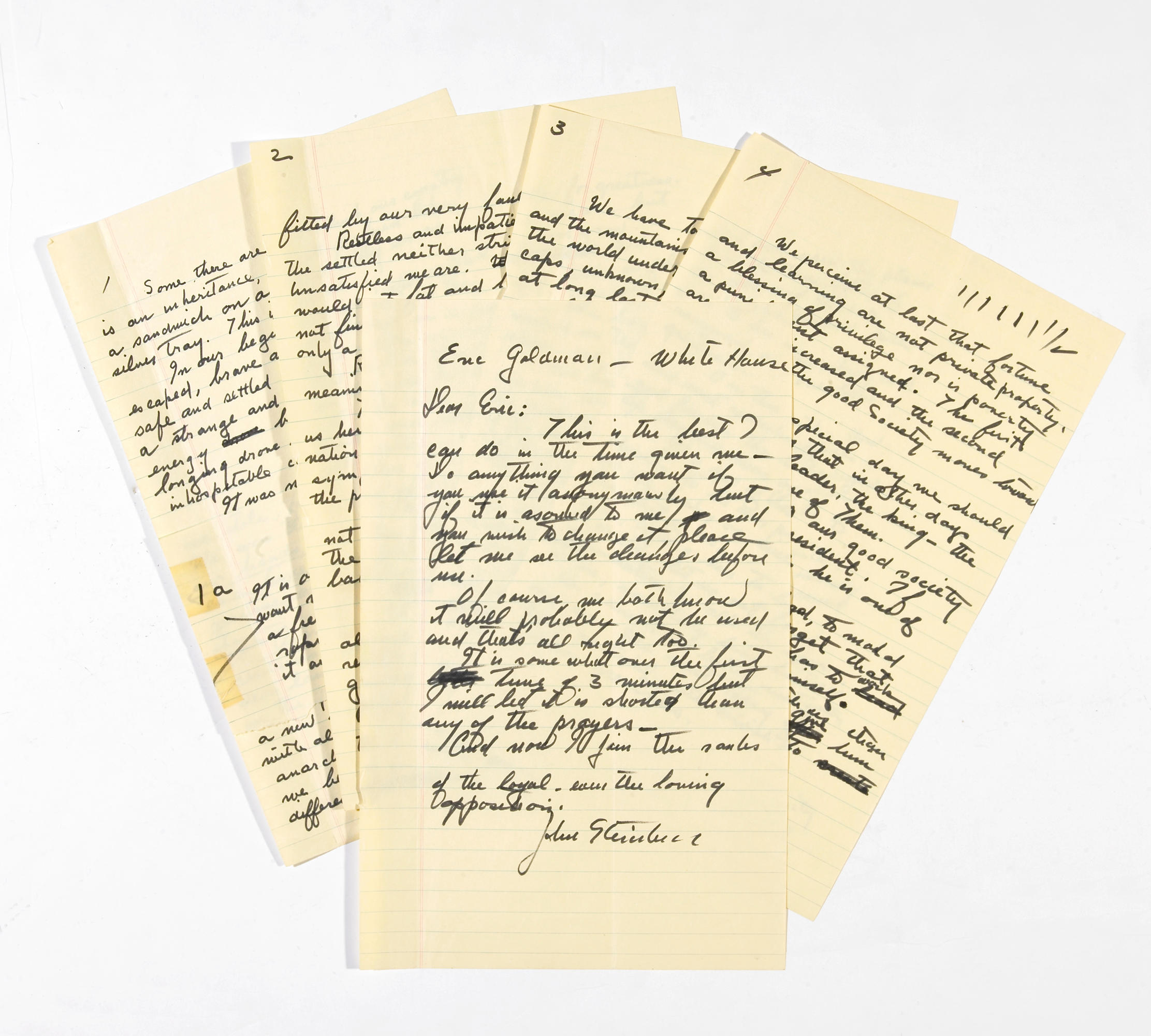

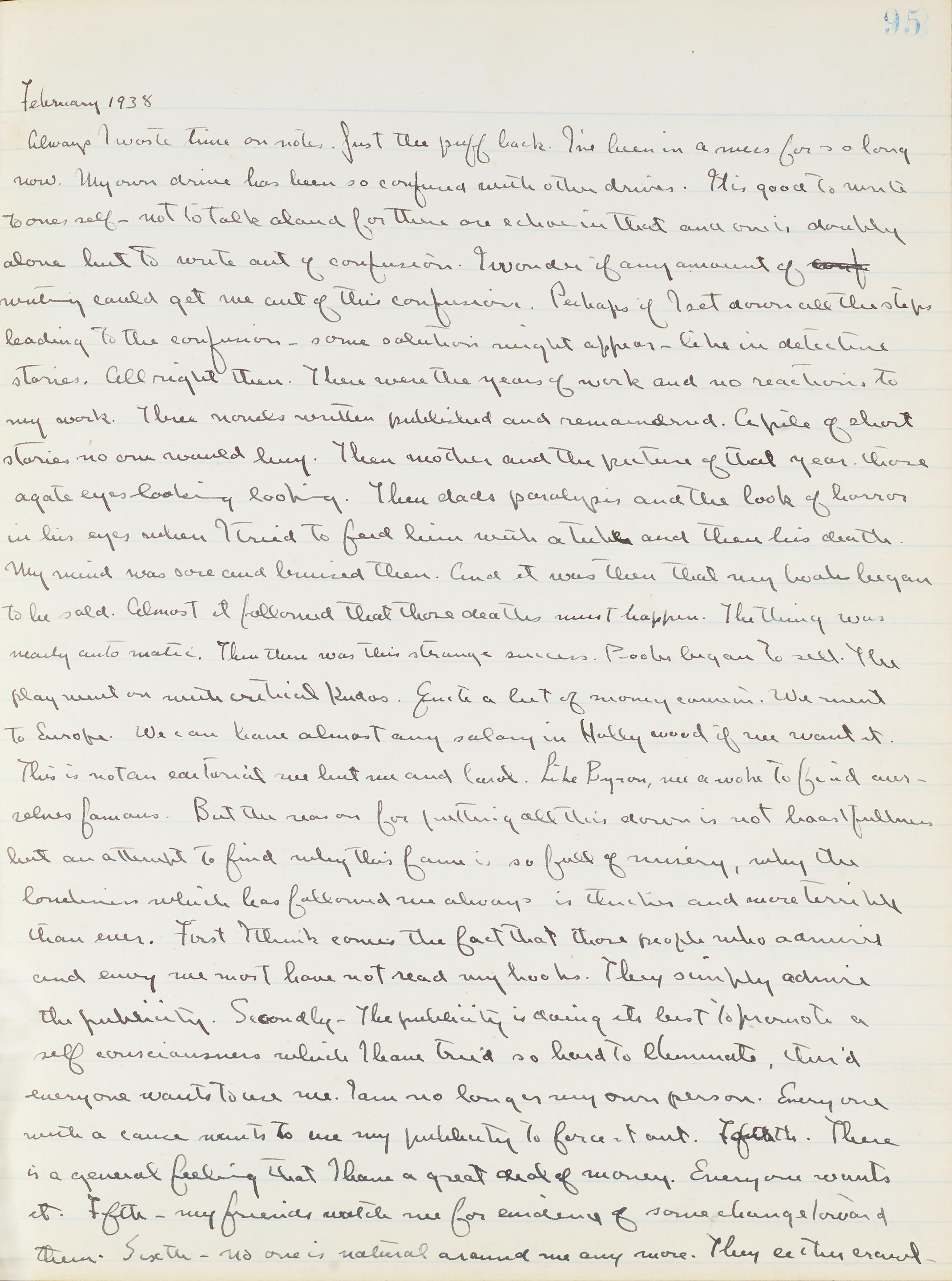


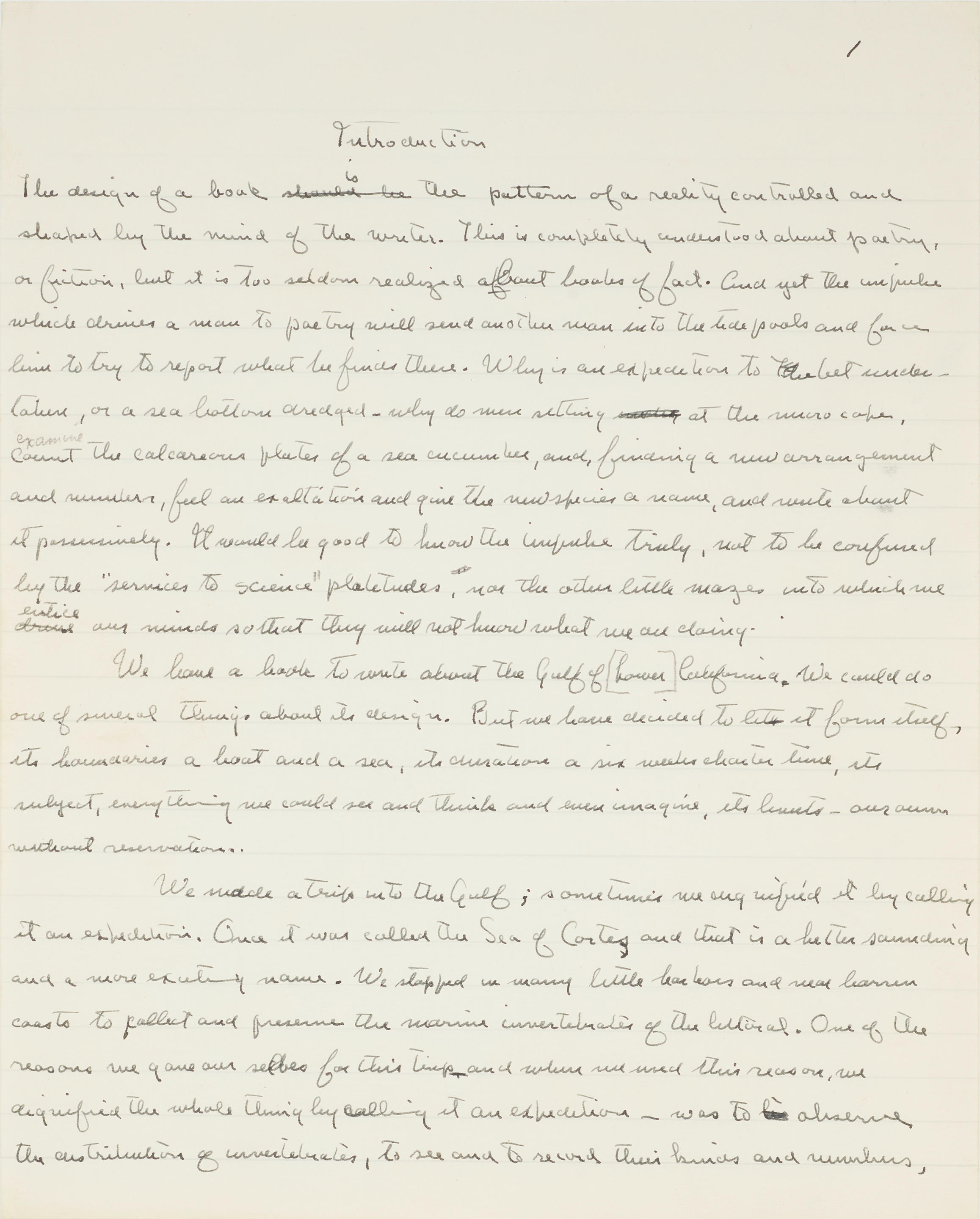

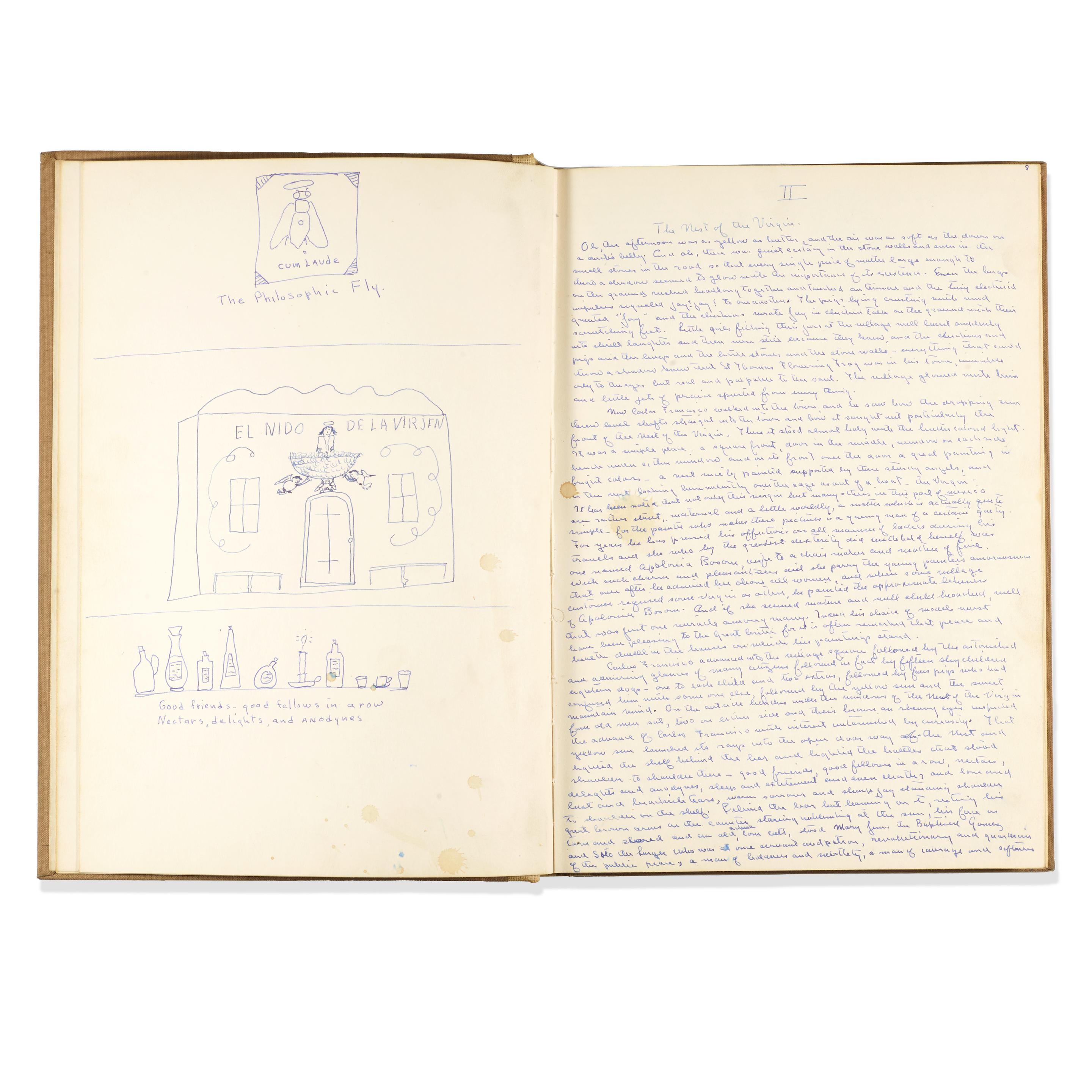
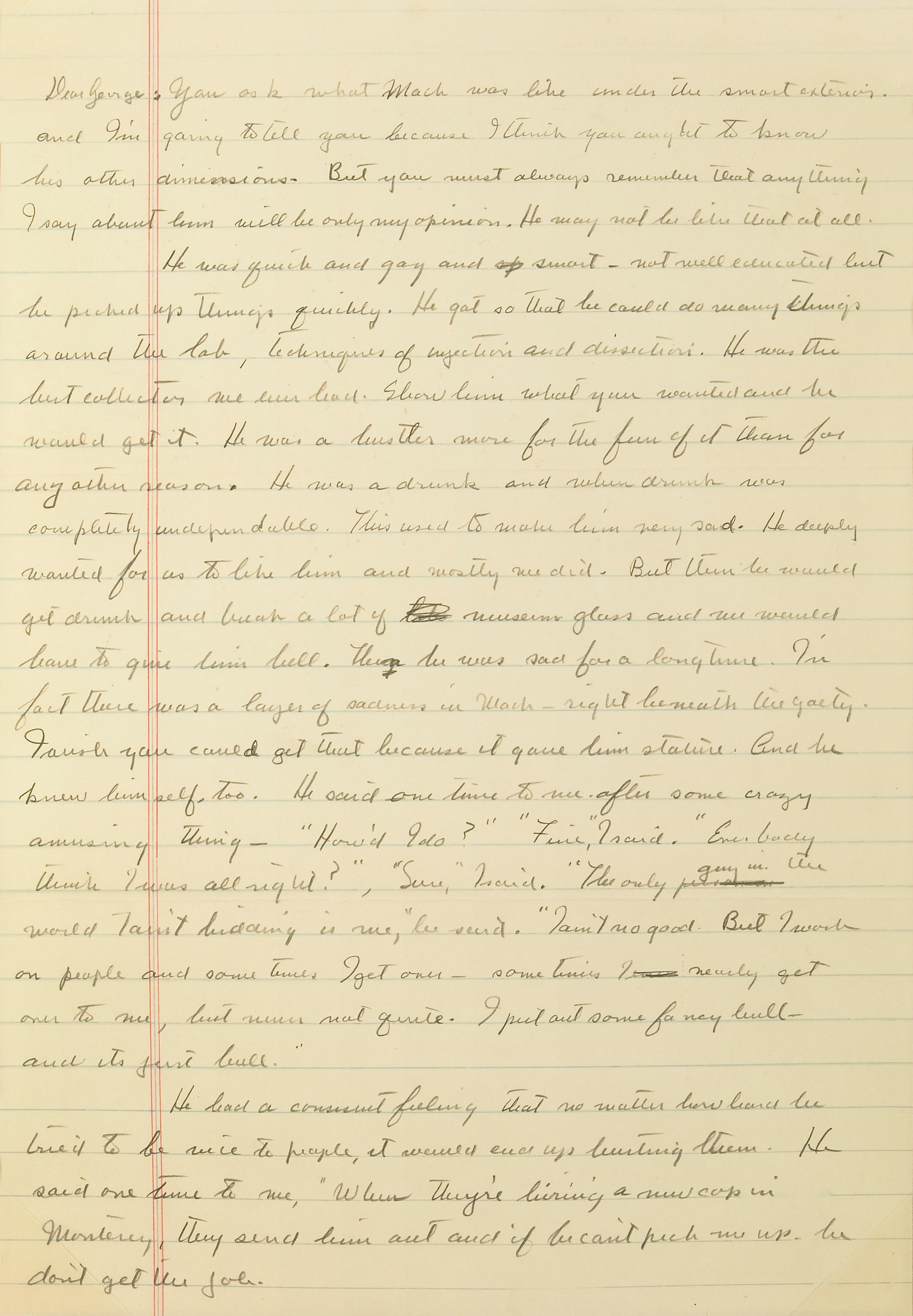
Testen Sie LotSearch und seine Premium-Features 7 Tage - ohne Kosten!
Lassen Sie sich automatisch über neue Objekte in kommenden Auktionen benachrichtigen.
Suchauftrag anlegen